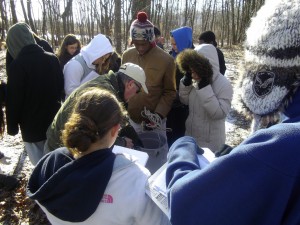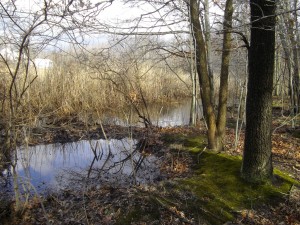Last week, Mr. Dickson, a GLOBE teacher, shared his experiences and how GLOBE has impacted his teaching. This week, he will let us know how he was able to easily incorporate GLOBE into his classroom.
My adventure to becoming a GLOBE teacher was all because I took advantage of the opportunities presented to me. The school that I teach at is an inner city school with adequate resources for basic science needs, but lacking in technology to monitor such things as water quality, biomass, etc. I was struggling to find ways to get my students involved with research. Luckily, while studying at Southern Connecticut State University, I registered for an ecology class taught by Professor Scott Graves.
Dr. Graves has been a GLOBE trainer in Connecticut for a number of years. In an effort to promote the GLOBE program, Dr. Graves teaches about it in his ecology courses, demonstrating that it is not only a successful research program for students, but that it costs next to nothing to participate in. Within weeks, I had learned how to create a densitometer to measure tree canopy using nothing more than a piece of PCP piping, dental floss and a paper clip! Measuring tree height required only a piece of cardboard, a printout measuring guide, a piece of string, and a paperclip. I didn’t need to purchase any tools; I simply needed to create some using materials that I already had.
(Note from The GLOBE Program Office – Is your teacher GLOBE trained? If not, he or she can contact a local partner or country coordinator to see about future training opportunities! Find the closest one by clicking on your country here: http://classic.globe.gov/fsl/INTL/table.pl?.)
Technology was the next step. With research, I discovered that Yale University and Southern Connecticut State University provide outreach programs to local New Haven and West Haven, CT schools. Through a loaner program, I could borrow equipment whenever needed as long as I scheduled a time with professors to borrow them. As I researched further, I discovered that almost every college/university in the United States provides assistance to high schools. With the assistance of Dr. Graves and Thomas Parlpiano of Yale, I had Vernier probeware equipment and other water chemistry tools. Now that I had the technology, I needed a site.
This, again, was a far less rigorous task than I assumed it to be. Every town has property set-aside as watershed properties, or ecological reserves. They allow, in fact appreciate, schools that assist in monitoring water quality and/or biomass because it keeps them informed with the condition of their reserve while giving students a place to perform their research. With the assistance of Dr. Graves and the West Haven City Council, I discovered our Cove River research site right behind our school. It is a watershed located right on Long Island Sound where Cove River transitions from fresh water to salt water. It is a deciduous forest that provides habitat to many species of animals and plants. The opportunity was presented to the city of West Haven for free monitoring of their Cove River site and the students of my school were given a chance to study the ecology of Cove River right behind their school. By simply asking the people that I work with, the professors with whom I study, and the town council, I had the technology and the place to study, for free!
Using the resources that I had through local universities (especially SCSU), the new GLOBE resources that were sent to me as part of my participation in the From Learning to Research project, and inspiration to include year-long project based research in their curriculum, I set into motion projects my students completed this year. GLOBE presented this wonderful opportunity; all I needed to do was convince my students to take advantage of it. The research and accomplishments that they made this year will carry with them through college and their future career.
-Mr. Kevin Dickson
Mr, Dickson’s students spent this past school year working on climate research projects studying their local environment. Have you been part of a research project about your local environment? Let us know by sending an email to science@globe.gov or adding a comment.



Schools that assist in monitoring water quality and/or biomass keep informed with the condition of their reserve while giving students a place to perform their research.
This shows the dedication of Mr. Dickson towards teaching and helping students grow. Not only will the students carry the accomplishments and research experience, they will also have Mr. Dickson within them, always!
through the accomplishments and experience of Dickson, the students have learned and good practice guidelines to be able to work assigned
Great achievment when you can lead young students into the right direction. Am wondering what they are doing in a few years time and if the give this knowledge to other students or their family.
Great dedication of Mr. Dickson towards teaching and helping students grow. Fantastic person. All the best.